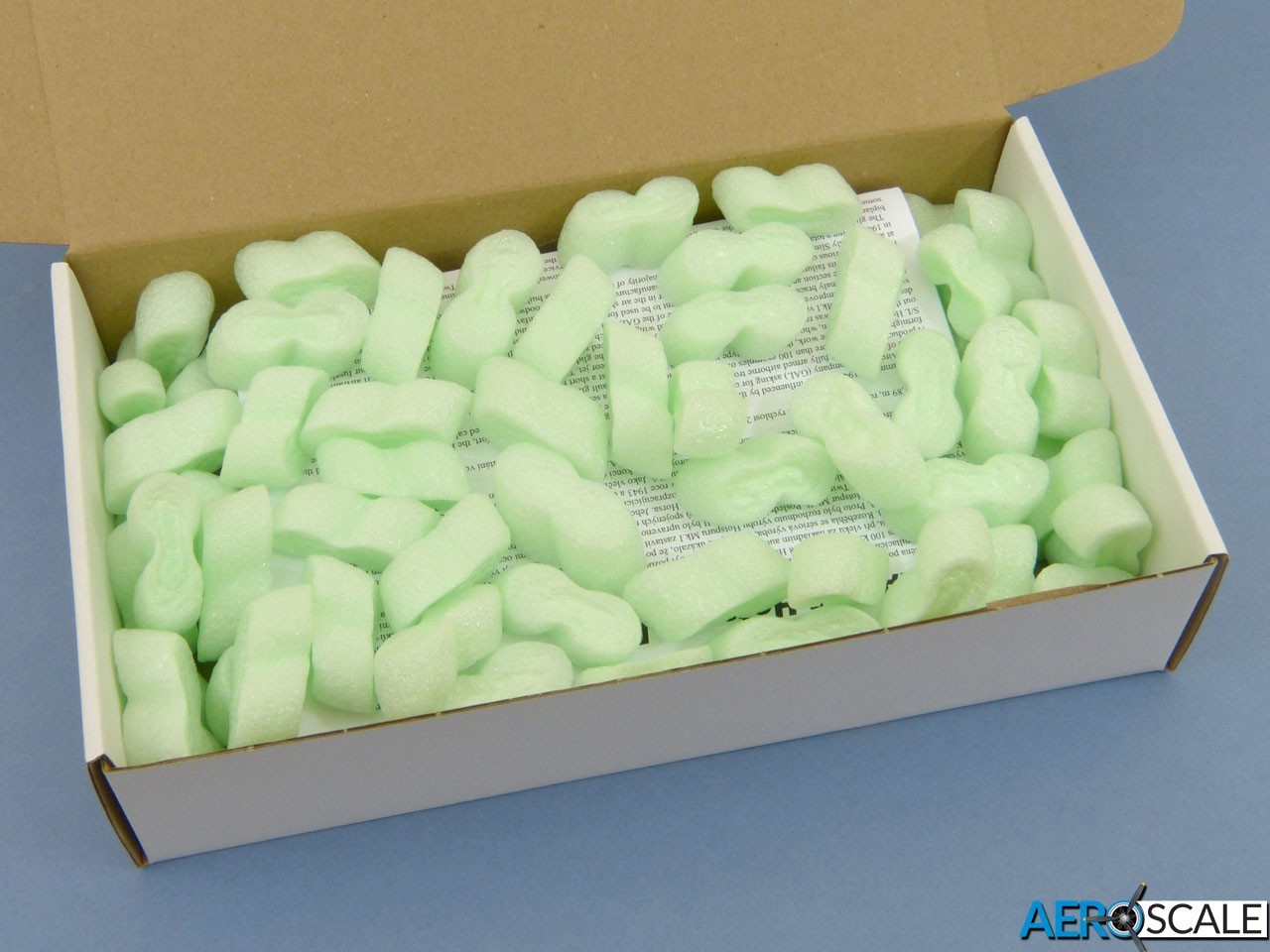
Planet Models' Hotspur arrives in a sturdy flip-top box, with the contents protected in transit by a generous filling of polystyrene foam chips. The parts and accessories are heat-sealed in plastic pouches and the sample kit reached me perfectly intact.




The kit comprises:
32 x beige-grey resin parts
13 x clear resin parts
2 x vacuformed canopies (1 is spare)
2 x white metal undercarriage legs
Decals for 2 x colour schemes








I was slightly disconcerted by the "frosted" appearance of the fuselage halves, but this is only on the exterior and the castings are perfectly smooth, so I don't know what caused it and, in any case, it's not a problem.

The casting overall is actually very good, with nice straight fuselage halves and wings, so this promises to be quite a straightforward build. I spotted a few pin-holes cavities here and there, but they'll be quick and simple to sort out. The only tricky bit in preparing the parts looks to be the rear casting points on the fuselage. These are are on the exterior, tucked tight under the horizontal tail, so you'll need to do a bit of careful trimming and sanding there.
The fuselage interior is left blank in the passenger area, but the cockpit is nicely detailed with 14 parts, plus decals for the rudimentary instrument panels and the compasses. No seatbelts are included (and reproductions available online from the original manual don't show any), but a couple of wartime photos appear to show the crew with shoulder harnesses - which they'd have surely needed to afford some protection in the inevitably bumpy landings.
The cockpit sides have a good representation of the ribs and stringers, plus map cases etc., but the detailing stops immediately behind the rear seat, so I think I'll continue it back into the forward passenger compartment and add a basic seat on the port side (and possibly the wing spar that separated the compartments), because I think this part of the interior will be visible through the well moulded vacuformed canopy. The inclusion of a spare canopy is a nice touch, both as insurance against accidents trimming it for use, but also if you want to go a step further and slice it in two to display open.


The fuselage portholes are supplied as clear resin inserts to install from the inside. These are necessarily pretty chunky, because the fuselage halves are cast quite thick for stability - despite the Hotspur never seeing active service because it was too small to carry sufficient troops, the model will still be quite large at around 10 inches long with a wingspan approaching 1 foot. Just as is evident in wartime photos, the small portholes won't allow much light into the cramped passenger compartments, and the real Hotspur can't have offered a pleasant ride for anyone suffering from claustrophobia!
The landing gear comprises resin fuselage skids and wheels, plus white metal fixed undercarriage legs. The photo above of the legs rather exaggerates the texture of the castings - they actually look much smoother to the naked eye and will certainly polish-up fine. The wheels are designed with a slightly "weighted" bulge where they attach to their casting blocks, so it will be wise to attach them with slow-curing CA or "5-Minute" epoxy to allow time to get all 4 wheels aligned correctly.
The kit includes a pitot head and venturi, but lacks the navigation lamp above the tip of the nose. It will be pretty straightforward to make this from scratch by referring to the many photos of the Hotspur that can be found online.
Instructions, Painting & Decals
The assembly guide is spread across three A4 sheets and is printed in colour. The 8-stage construction sequence looks pretty straightforward and the diagrams are clear to follow. Generic paint names are given in the painting guide - standard RAF colours plus "tyre black" and "wood", so they'll be simple to find in whatever range of model paints you use.

Planet Models offer decals for pair of Hotspurs:
GAL.48 Hotspur Mk.II, BT551/L, No.2 Glider Training Unit, Weston-on-the-Green, Oxforshire, England, 1942.
GAL.48 Hotspur Mk.II, BT744/B1, No.1 Service Flying Training School, RAF base Netheravon, England, 1942.
The decals appear to be excellent quality - thin and glossy and printed in precise register. There's a bit of excess carrier film, but this is crystal clear and I found it disappeared perfectly when I used the similar decals supplied in Special Hobby's recent new-tool 1:72 Bf 109E.


Conclusion
Planet Models' Hotspur looks like it will be a very enjoyable build of an often overlooked aircraft that played an important secondary role in training glider troops for the liberation of Europe. Modellers who are experienced with resin kits shouldn't have any problems building it, and the overall simplicity could make it an attractive challenge for anyone wanting to try a mixed media kit of this type for the first time.
Kit #PLT 211 is available now from Special Hobby - Price: 62.30 Euros.
Many thanks to Special Hobby for providing the review sample.
Please remember, when contacting retailers or manufacturers, to mention that you saw their products highlighted here - on AEROSCALE



























